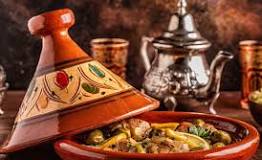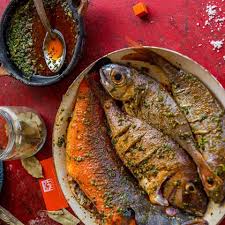The Art of Moroccan Cooking: Exploring the Flavours of Tagine
When it comes to Moroccan cuisine, one dish stands out as a true emblem of the country’s culinary tradition—the tagine. This iconic dish not only tantalises the taste buds but also embodies the rich history and cultural heritage of Morocco.
Origin and Significance
The word “tagine” refers to both the earthenware pot in which the dish is cooked and the stew-like meal that bears its name. Traditionally, tagines were prepared by Berber tribes in North Africa as a way to slow-cook meats, vegetables, and aromatic spices over an open fire.
Today, tagine has become a staple in Moroccan households and restaurants alike, symbolising warmth, hospitality, and togetherness. It is often served during festive occasions and family gatherings, bringing people together around a shared love for good food.
Ingredients and Preparation
The beauty of tagine lies in its simplicity and versatility. A typical tagine consists of tender meat (such as lamb, chicken, or beef), an array of vegetables (like carrots, potatoes, and tomatoes), dried fruits (such as apricots or prunes), fragrant herbs (like coriander and parsley), and a blend of spices (including cumin, cinnamon, paprika, and saffron).
To prepare a tagine, ingredients are layered in the conical-shaped pot with a small amount of liquid (usually water or broth) to create steam. The pot is then sealed with a fitted lid to trap the moisture and flavours inside. The slow cooking process allows the ingredients to meld together harmoniously, resulting in a tender and flavourful dish.
Serving and Enjoying
Tagine is typically served with crusty bread or fluffy couscous to soak up the delicious sauce. The communal act of sharing from a central tagine pot adds an element of conviviality to the dining experience.
Each region of Morocco puts its own twist on tagine by incorporating local ingredients or culinary traditions. Whether you’re savouring a fragrant lamb tagine in Marrakech or indulging in a spicy fish tagine by the seaside in Essaouira, each bite tells a story of Morocco’s diverse landscapes and cultural influences.
Embrace Moroccan Flavours
Exploring the world of Moroccan cooking through tagine is not just about nourishing your body—it’s about immersing yourself in centuries-old culinary traditions that have stood the test of time. So next time you’re craving an exotic gastronomic adventure, why not try your hand at preparing your own authentic Moroccan tagine? Let its aromas transport you to the bustling souks and sun-drenched landscapes of this enchanting North African country.
Enhance Your Moroccan Cooking: 6 Essential Tips for Authentic Flavour
- Use a variety of spices such as cumin, paprika, cinnamon, and turmeric to add depth of flavour to your Moroccan dishes.
- Incorporate dried fruits like dates, apricots, and raisins for a sweet and tangy element in tagines and couscous dishes.
- Don’t be afraid to experiment with preserved lemons or olives to give your dishes an authentic Moroccan taste.
- Cook meat slowly over low heat to tenderize it and allow the flavours to meld together beautifully.
- Serve traditional mint tea alongside your meal for a refreshing and aromatic beverage that complements the rich flavours of Moroccan cuisine.
- Garnish your dishes with fresh herbs like parsley or coriander for a burst of freshness and colour.
Use a variety of spices such as cumin, paprika, cinnamon, and turmeric to add depth of flavour to your Moroccan dishes.
Enhance the authenticity of your Moroccan dishes by incorporating a medley of spices like cumin, paprika, cinnamon, and turmeric. These aromatic ingredients not only infuse your creations with a symphony of flavours but also evoke the essence of Moroccan cuisine. From the earthy warmth of cumin to the sweet notes of cinnamon, each spice plays a crucial role in creating a culinary masterpiece that transports your taste buds to the vibrant markets and bustling kitchens of Morocco.
Incorporate dried fruits like dates, apricots, and raisins for a sweet and tangy element in tagines and couscous dishes.
Enhance the depth of flavour in your Moroccan tagines and couscous dishes by incorporating a medley of dried fruits such as dates, apricots, and raisins. These sweet and tangy gems not only add a delightful contrast to savoury ingredients but also infuse your dishes with a touch of exotic sweetness that is characteristic of Moroccan cuisine. The subtle chewiness and burst of fruity goodness from these dried fruits elevate the overall taste profile, creating a harmonious blend of flavours that will transport your taste buds to the vibrant markets of Morocco.
Don’t be afraid to experiment with preserved lemons or olives to give your dishes an authentic Moroccan taste.
For an authentic Moroccan flavour experience, don’t hesitate to experiment with preserved lemons or olives in your cooking. These traditional ingredients add a tangy and aromatic twist to your dishes, elevating them to a new level of authenticity. Whether you’re preparing a classic tagine or a vibrant couscous dish, incorporating preserved lemons or olives will infuse your creations with the distinctive taste of Morocco, transporting your taste buds to the bustling markets and sun-soaked landscapes of this captivating country.
Cook meat slowly over low heat to tenderize it and allow the flavours to meld together beautifully.
To master the art of cooking a Moroccan tagine, remember this essential tip: slow-cook the meat over low heat. This technique not only tenderizes the meat but also allows the rich flavours of the spices and ingredients to meld together beautifully. Patience is key when preparing a tagine, as the slow cooking process ensures that each bite is infused with the essence of Moroccan culinary tradition.
Serve traditional mint tea alongside your meal for a refreshing and aromatic beverage that complements the rich flavours of Moroccan cuisine.
Enhance your Moroccan dining experience by serving traditional mint tea alongside your meal. This refreshing and aromatic beverage acts as the perfect complement to the rich and vibrant flavours of Moroccan cuisine. The soothing blend of fresh mint leaves and fragrant green tea not only cleanses the palate but also adds a touch of authenticity to your culinary journey, transporting you to the bustling streets of Marrakech with each sip.
Garnish your dishes with fresh herbs like parsley or coriander for a burst of freshness and colour.
Enhance the vibrant flavours of your Moroccan dishes by garnishing them with a generous sprinkling of fresh herbs such as parsley or coriander. These fragrant greens not only add a burst of freshness but also infuse your creations with a pop of vibrant colour, elevating both the visual appeal and taste profile of your culinary masterpieces. Whether sprinkled atop a steaming tagine or delicately scattered over fluffy couscous, the addition of these aromatic herbs is sure to transport your senses to the bustling markets and sun-soaked landscapes of Morocco.



